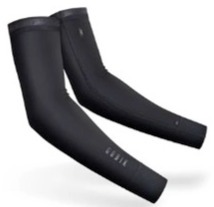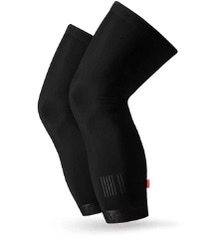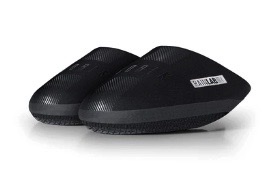Best Autumn Clothes for Cycling
- Andrea from Pedaling Words

- Oct 17, 2021
- 5 min read
Welcome to Autumn, Q4 of the cycling year. September to December, those fall months, depending on where you live, normally mean the start of cooler to cold temperatures. Crip, frosty mornings can turn, or not, into warm mid-days and afternoons. Definitely a tricky time of the year for picking out your cycling clothes. How do you stay comfortable as temperatures fluctuate between shade and sun on your route?
The thermometer isn’t dipping low enough to merit breaking out your full-on winter gear, so what do you do? Well, you’re in luck. With just a few key pieces, you can prolong your spring and summer gear to get you through. The secret is layering.
If you are active in other sports, you probably have a few useful elements in your wardrobe already. Athletic clothing may carry a label under one sport, but is more than useful in cycling, skiing, or hiking. You get the picture.

Merino Wool
I’m starting out strong with my hands-down favorite clothing material. You simply cannot go wrong with anything made of Merino wool. You may be thinking, wait, wool? Isn’t it itchy? The absolute answer is a firm NO, not Merino. Those days are long gone. Today’s Merino wool is comfortable, a delight to wear against your skin, and not bulky at all.
Merino (and all wool) is nature’s original technical fabric and perfect for layering. It’s what the peloton wore before modern technical fabrics existed. Wool regulates body temperature like a charm, evacuates sweat away from the skin to keep you dry, and is resistant to orders. It is used to make many types of garments, everything from underwear to pants, but I’m a big fan of long, short and sleeveless base layers.
Sleeveless is perfect in the summer, and you can use it under a short- or long-sleeved top as well. That already gives you 2 layers. When your core is warm, the rest of you usually is too. Don a long-sleeve Merino top under a lightweight long-sleeve jersey, or throw the short-sleeved one under a thicker long-sleeve jersey. Even go triple down, sleeveless, short and then long. You won’t feel like the Michelin man.
Merino base layers come in different weights, usually 150 or 200g in the mid-weight category, which is the one I prefer. Check the fine print regarding the garment’s “weight”, and also that it is 100% Merino and not a blend. The best thing about Merino tops is that you can also wear them off the bike! I have amassed an impressive collection that goes perfectly with shorts, jeans, khakis, or whatever. Just buy ones with no or discreet logos only.

Lightweight, Packable Vest
Coming in at number two for the best autumn clothes for cycling is a lightweight packable vest. They usually have a built-in storage pocket (you won’t lose it!) for when it’s not in use. It gets compact, not much larger than the palm of your hand. And they go a long way in keeping a chill away on the downhill after a long and sweaty climb to the top.
If you can find a similar vest with removable sleeves, that’s another plus, but it’ll be larger in volume and take up more valuable pocket real estate. A vest alone might be enough for those who don’t get cold easily and are already sporting at least one Merino wool base layer. Whichever format you choose, don’t leave home without it!
If you live in a damper part of the world, study the product label for additional rain protection. If you do get caught out without a vest and are cold, go old-school and find some good old-fashioned newspaper to put between your chest and your jersey.
Knee, Leg, and Arm Warmers and Toe Covers
With this superhero quartet of cycling accessories, you are ready to tackle anything Mother Nature dishes out during the transitional autumnal months. Shorts become knickers or full-length tights, and any short-sleeved jersey converts into a long-sleeve.
When you are ready to remove a layer, knee and leg warmers are quick and easy. Well, fairly easy; those shoes and cleats can get in the way, but they are definitely worthy companions. Once off, roll them up and slip them into one of your back pockets. No room? Stuff them under your jersey. They won’t fall out and you’ll barely notice them.
Arm warmers are a practical addition to any cycling wardrobe, turning summer jerseys into autumn gear in a matter of seconds. And when you get too hot, but might need them in short order, just push them down around your wrists. There, they faithfully lay in wait for their next call to duty. Or definitively slip them off and store them away.
Toe covers are simply brilliant, the perfect choice when autumn temperatures chill your toes, yet full shoe covers are too much. This small piece of kit packs a punch, protecting toes from windchill, morning dew and road humidity that may kick up on the feet during a ride. And the added bonus? They keep your shoes clean too!
Lightweight Gloves
Gloves might not make the team in September and October, but you’ll be happy to have them in November and December. After all, having icy, stiff hands makes it hard to hold the handlebars and brake properly. So, for safety’s sake, as well as your comfort, have a lightweight pair on hand (couldn’t help the pun!).
Before you shell out any hard-earned money on gloves, read those product labels to verify the material has the technical properties you are looking for and need. Rain resistance? Machine washable? Windproof? These are important considerations. Don’t forget fingertips that work on screens!
If you aren’t prone to cold hands, but want some kind of protection, look for lightweight knitted gloves with rubber grippers on the palms and fingers. They
are also useful off the bike.
An Ear band, Beanie, or Cycling Cap
There is great debate about how much body heat we lose through our heads, but why take that risk? No one wants a cold head or ears to ruin a perfectly good autumn morning ride. Any of these options will be more than a treat when Jack Frost is at work.
If travelling light is your thing, the ear band is ideal and shouldn’t affect how your helmet fits. Nobody wants to readjust the straps, am I right? Break out those bands designed to absorb sweat during hot weather, but this time, slide ‘em down a bit to cover the tops of your ears, and bingo! No more cold ears and a few extra bucks for the coffee stop.
If your head is shaved or bald, then shelter your crane from icy winds with a beanie, aka skullcap. Or dig deep into your cycling garb and resurrect a classic cotton cycling cap for a layer of protection. Remember our friend Merino wool? Oh yes, you can find beanies in this material too.
If all else fails on an extra cool morning or it’s threatening rain, throw some packaging tape over your helmet vents. What? You don’t have any transparent tape around? Who cares? Use whatever you got. Your head will be warm and dry.
My last recommendation for Q4 is to wear jerseys with actual collars and zip up all the way to block any wind from getting in, or use a lightweight neck warmer. Do you have a favorite tip or piece of clothing for autumn? If so, share your wisdom in the comments below.


















Comments